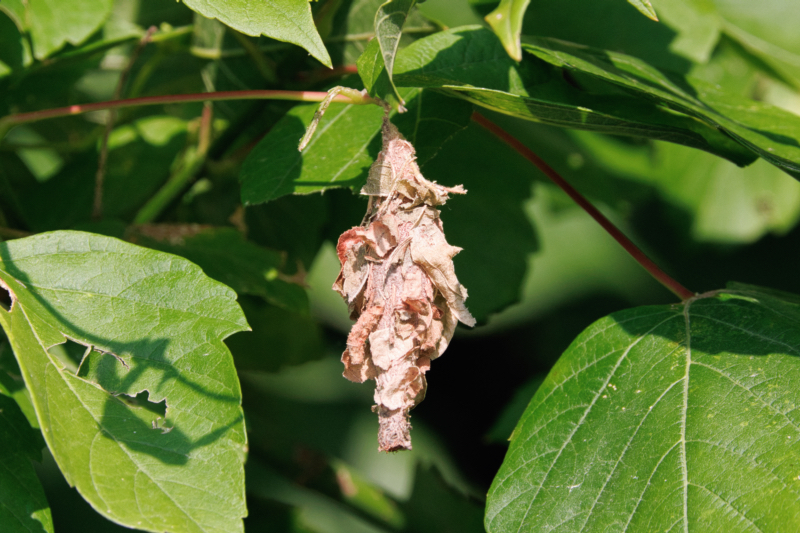While driving the auto tour road through the Sequoyah National Wildlife Refuge in Oklahoma, I spotted an intricate Bag Worm home hanging from a limb near the road. It was a subtle sight, seamlessly blending into its surroundings and easy to overlook.

The Ingenious Bag Worm
Bag Worms, also known as Bagworm Moth Caterpillars, belong to the family Psychidae. They create unique, bag-like structures to serve as protective homes during their caterpillar stage. These bags are made of silk and camouflaged with bits of the surrounding environment, like leaves, twigs, and other debris. Each bag is a testament to the caterpillar’s resourcefulness, as it carefully selects materials like leaves and twigs that resemble its immediate surroundings, weaving them into the silk to create an effective camouflage against predators. This adaptation provides both shelter and disguise, making these caterpillars hard to spot unless you know what to look for.
Life Cycle and Transformation
The Bag Worm’s life cycle is fascinating and complex. During the larval stage, the caterpillar stays inside its bag, feeding on leaves and growing. While hidden in its mobile shelter, it moves along branches, occasionally adding more material to reinforce its structure. Once it reaches maturity, the caterpillar enters the pupation stage within the bag, where it remains for several weeks as it undergoes the complex transformation into a moth. This transformation happens entirely within the confines of its self-made home, a process that underscores the ingenious survival strategies of these creatures.
Brief Adult Lives
Adult Bag Worm Moths are unremarkable in appearance and live only a few days, much shorter than the lifespan of most moths. During this brief period, their sole focus is reproduction. Males, equipped with wings and feathery antennae, take to the air to locate females for mating. In contrast, females are flightless and have a maggot-like appearance, remaining within their bags even as adults. Despite their lack of mobility, female Bag Worm Moths play a critical role in the species’ continuation. After mating, they lay their eggs inside the same bag that protected them during their development. This efficient use of resources ensures the safety of the next generation.
Starting the Cycle Anew
Once the eggs are laid, the life cycle begins anew. Tiny caterpillars emerge from the eggs and immediately start constructing their own miniature bags using silk and nearby materials. As they grow, their bags grow with them, serving as both a shield and a camouflage tool. Observing this cycle in nature highlights the specific adaptations, like their camouflaged bags and resourceful feeding strategies, that help these creatures survive despite predators and environmental challenges.

Steve,
I’ve signed up for your blog several months ago,and it’s been wonderful.
However, I haven’t received your emails for the last week.
Can you please reinstate me?
Thanks!
Sue Johnson
The plugin I was using to send those emails was causing problems for my site so deleted that plugin. I don’t have a current way of sending those.